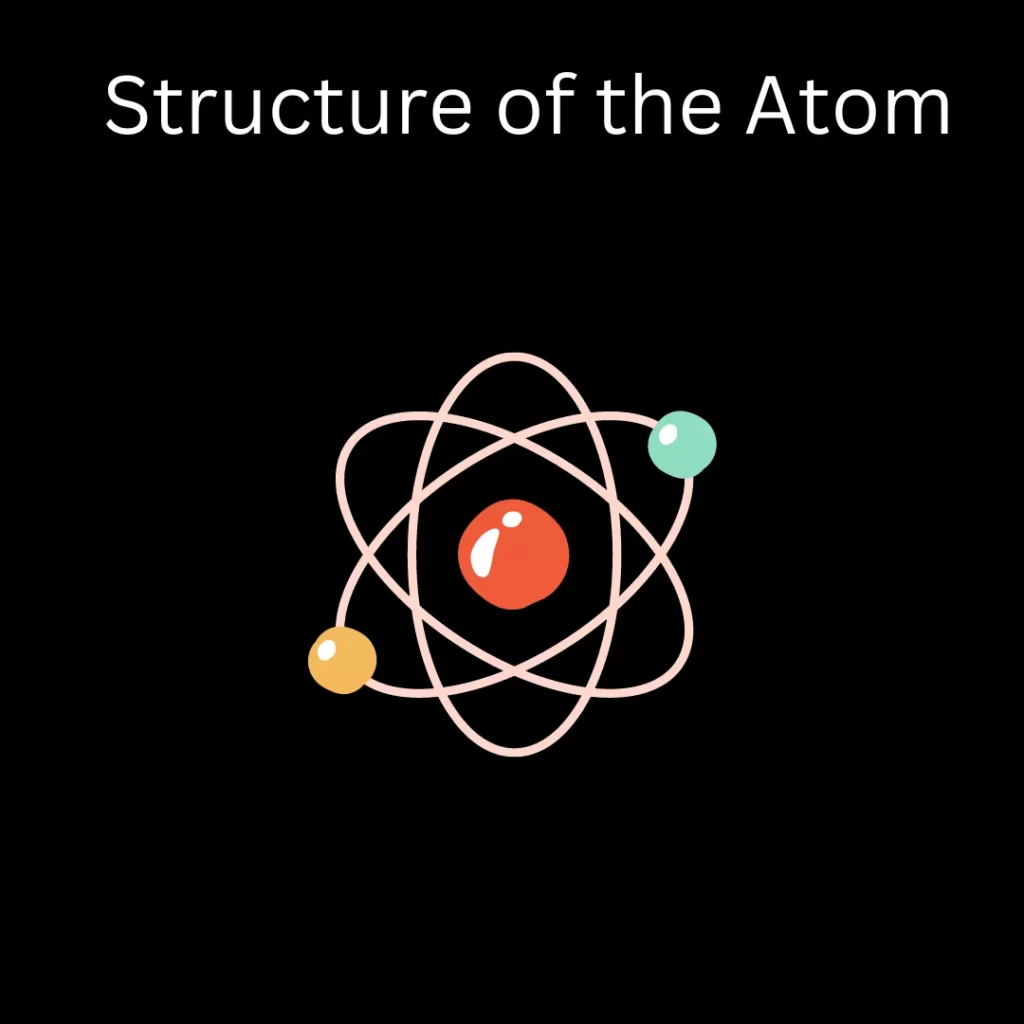introduction
Class 9 is an important phase in every student’s life. It is the class in which students learn about the basic building blocks of matter – atoms. Atoms are the smallest particles of an element that have the chemical properties of that element. All matter is made up of atoms, and atoms are held together by forces called bonds. The structure of atom class 9 will cover all aspects related to atoms, their discovery, and structure. This includes a brief history of the discovery of the atom, as well as an overview of atomic structure.
History
Atomic theory is the scientific theory of the nature of matter. It states that matter is composed of small units called atoms. Atomic theory began as a philosophical concept in ancient Greece. It was not until the early 19th century, however, that scientists developed a more concrete understanding of atoms and their role in chemical reactions. In the centuries since, atomic theory has been continually refined and expanded upon to better explain the behavior of matter on both the macroscopic and subatomic level.
Types of Atoms

Atoms are the basic units of matter and the defining structure of elements. The term “atom” comes from the Greek word for indivisible, because it was once thought that atoms were the smallest things in the universe and could not be divided. The structure of an atom is a central nucleus composed of protons and neutrons with electrons orbiting around this nucleus.
The number of protons in an atom’s nucleus determines which element the atom belongs to. For example, all atoms with 6 protons in their nucleus are carbon atoms. The number of protons in an atom also determines how strong the atom’s nucleus is held together (termed “atomic number”). Elements with a higher atomic number have stronger nuclear forces and are more stable.
The types of atoms can be broadly classified into two categories: metallic and non-metallic. Metallic atoms have abundant electrons orbiting around their nuclei, giving them good conductivity properties. Non-metallic atoms have fewer electrons around their nuclei, making them poor conductors of electricity.
Structure of an atom

Dalton’s atomic theory proposed that an atom is an indivisible and indestructible identity. But with the discovery of two sub-atomic particles electrons and protons, this theory failed to account the structure of atom. The discovery of sub-atomic particles proved that atoms are indeed divisible. It then became necessary to find how electrons and protons are distributed inside an atom. For explaining this, many scientists proposed various models for atom
Thomson’s Model of Atom
When Thomson proposed his model, neutrons were not discovered. This model was similar to plum-pudding. According to his model:
(i) An atom consists of a positively charged sphere and electrons are embedded in that sphere.
(ii) The positive and negative charges are equal in magnitude hence the atoms as a whole is electrically neutral.
Also, Thomson’s model can be thought to be similar to a water melon. The red, edible portion represents the positive sphere and the black seeds are like electrons embedded.
The discovery of the electron
In 1897, J.J. Thomson discovered the electron while studying cathode rays in gases. He observed that when cathode rays were passed through a Gas discharge tube, they produced a glowing area on the far side of the tube. From his experiments, he was able to deduce that the cathode rays were negatively charged particles that he called “corpuscles.”
The Rutherford model of the atom

Ernest Rutherford wanted to describe the arrangement of electrons inside an atom.
On the basis of the results of his famous scattering experiments (described later), Rutherford (1911) proposed his model of the atom. He proposed that an atom consists of a dense central core, called nucleus, in which all of the positive charges and entire mass of the atom are concentrated. This nucleus is surrounded by electrons constantly moving in defined orbits, just as the planets move in regular orbits around the sun. These electrons were, therefore, called planetary electrons.
Rutherford’s Experiment: Discovery of the Nucleus

Natural radioactivity (spontaneous disintegration of heavy atoms giving off alpha, beta and gamma rays) had been discovered in 1895 by Henri Becquerel Alpha rays (a-particles) are positively charged helium ions ( He² ) which have a mass of four units and two units of positive charge. Rutherford (1911) allowed a narrow beam of alpha (a) particles from a radioactive source to strike an extremely thin sheet of gold. The emergent beam of a-particles was then allowed to fall on a screen coated with a phospher, e.g., zinc sulphide, placed behind the gold target. A schematic diagram of Rutherford’s experiment is shown in
Observations
Rutherford observed that
- (i) Most of the a-particles passed through this foil of gold as if it were not there.
- (ii) Few of the a-particles were deflected from their original path by small angles as they encountered the target.
- (iii) Very few a-particles actually bounced back in the direction from which they came. Surprisingly one out of every 12000 particles appeared to rebound.
conclusion
On the basis of the observations in the above a-particle scattering experiments, Rutherford concluded that
(i) Atom consists of predominantly empty space because most of the ∝-particles passed through the gold sheet without any deflection.
(ii) Atom consists of a central nucleus containing positively charged particles because few of the ∝- particles suffered deflection and even bounced back in the direction from which they came.
(iii) The space occupied by the nucleus is very small as compared to the total volume of the atom because a minute fraction of the ∝-particles underwent strong deflection. On the basis of this data, he stated that size of the nucleus is about 10-5 times that of an atom.
(iv) Whole of the atomic mass is concentrated in the nucleus.
Rutherford’s structure of atom
On the basis of his ∝-particle scattering experiment, Rutherford stated that:
(i) There is positively charged centre in an atom which was termed as nucleus. Nearly all of the mass of an atom resides in the nucleus.
(ii) The electrons revolve around the nucleus in well defined orbits, like planets are revolving around the Sun in solar systems. The electrostatic attraction between nucleus and electrons keep the electrons in the orbits.
(iii) The size of the nucleus is very small relative to the size of the atom.
Defects in the Rutherford’s Model
(i) According to classical electromagnetic theory, a moving charged particle, such as an electron under the influence of attractive force (between negatively charged electron and positively charged proton) loses energy continuously in the form of electromagnetic radiation. As a result of this, electron should lose energy and therefore, should move in
The Bohr model of the atom
In the Bohr model of the atom, electrons orbit the nucleus in shells. The first shell can hold up to two electrons, the second shell can hold up to eight electrons, and the third shell can hold up to 18 electrons. The model also states that electrons can jump from one shell to another.
Conclusion
Atoms are the basic units of matter and the defining structure of elements. The term “atom” comes from the Greek word for indivisible, because it was once thought that atoms were the smallest things in the universe and could not be divided. The structure of an atom is a central nucleus composed of protons and neutrons with electrons orbiting around this nucleus.

